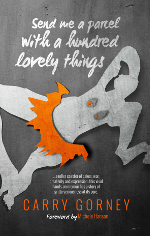
This is a new textbook which covers a wide range of creative therapies, and how people incorporate nature into the work. Mary Reynolds Thompson & I co-authored the chapter:
Inner and Outer Landscapes: Bringing Environment into the therapeutic relationship through Expressive Writing
Don’t forget:you can request this or any of the other titles from your local library
Journal Prompt: Explore your relationship with reading over your life – has it changed? Can you remember learning to read? Who was involved with your early reading?
What ‘bookish’ memories come to you?
A version of the following article appeared in the June edition of Integrating Connections
I am a compulsive reader – I read to learn about the world and to understand my own world. The urge to create a meaningful narrative from the events of a life, to understand and to learn, is one of the reasons people come to psychotherapy. Psychotherapists and authors might therefore agree that we read to make sense of our lives and our experience.
Sometimes our professional and personal lives align in a novel in ways that can illuminate both. Recently I picked up a couple of novels from the New Books Shelf at my local library. By chance, they both contained adoption themes:
The Tea Girl of Hummingbird Lane – Lisa See
A Book of American Martyrs – Joyce Carol Oates
I work a lot with clients with adoption stories (from different parts of the adoption triad). I run a group for adoptees. I am an adoptee. Perhaps this makes me particularly sensitive to these themes; I know I am profoundly grateful when I find them. These stories occur in adult fiction from Wuthering Heights to The Orphan Train. Children’s literature has always been full of adoption stories – think of Anne of Green Gables, The Secret Garden, The Once and Future King. Novels are extra resources I can suggest to clients and show me new perspectives on their stories and my own.
The Novel Cure – An A-Z of Literary Remedies (Berthoud and Elderkin 2013) has a very short section on adoption – if you have come across any books (fiction, non-fiction – as I said, I’m eclectic) with these themes please do let me know at kate@katethompsontherapy.com or leave a note on this post.








